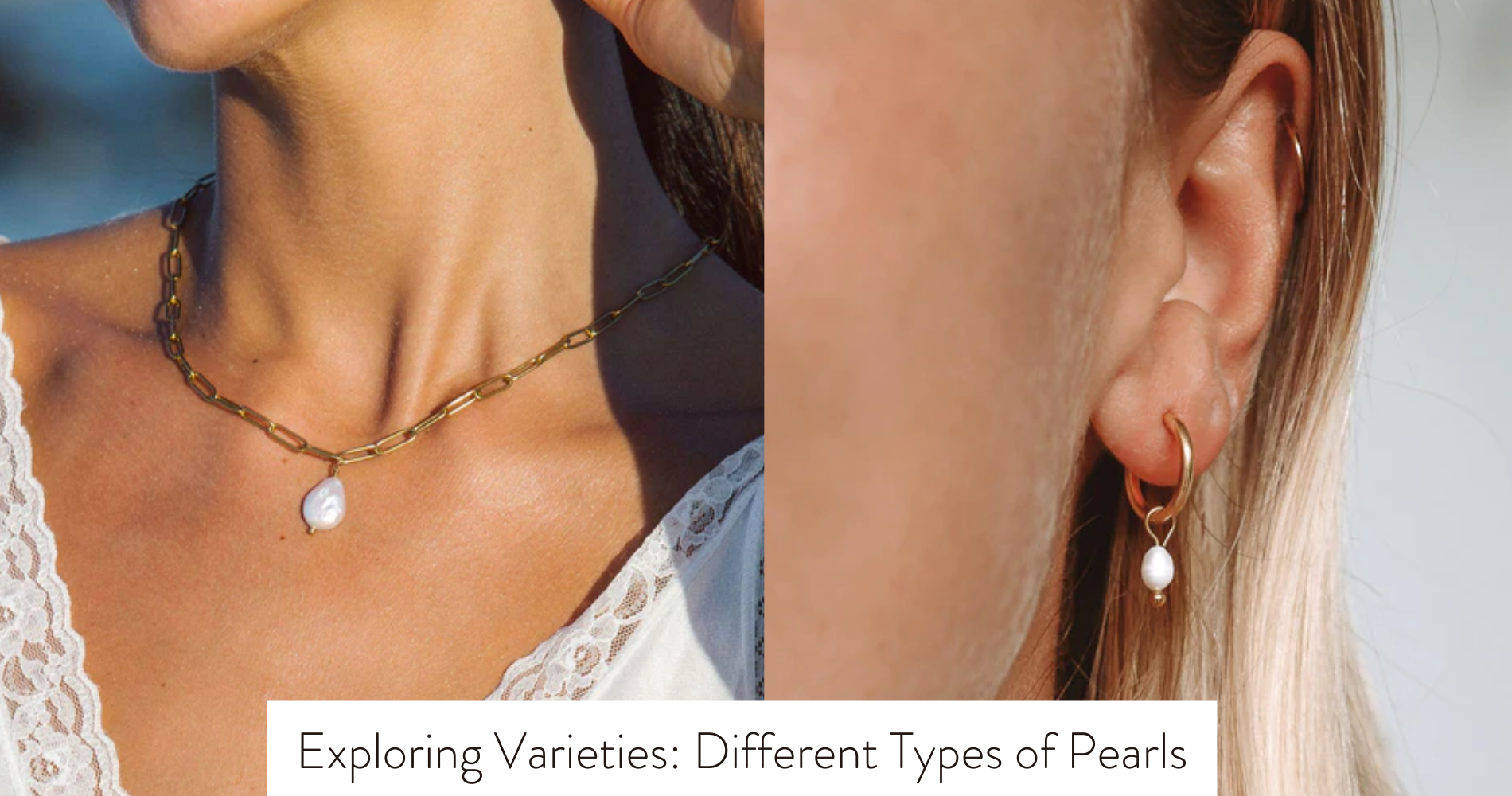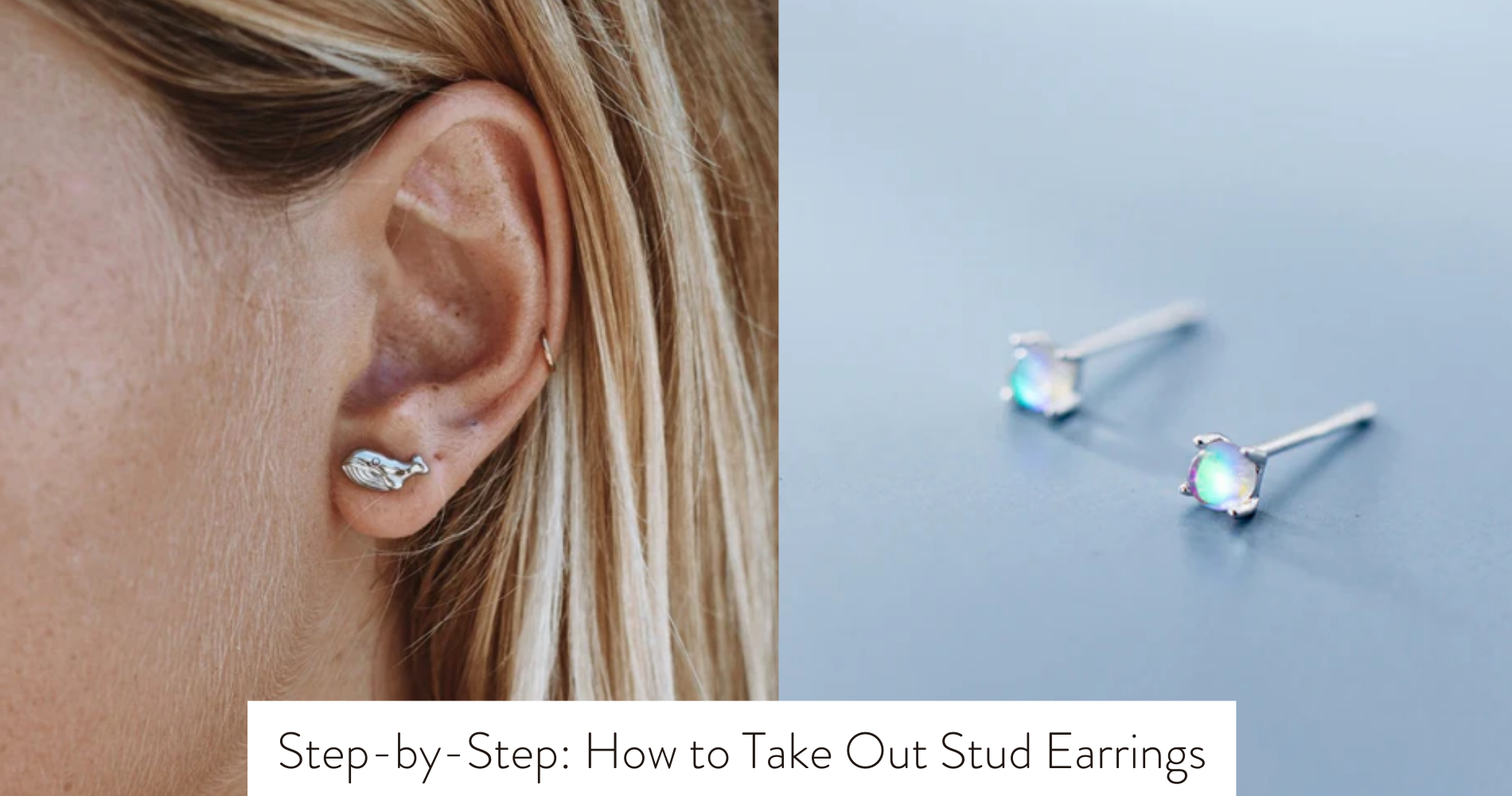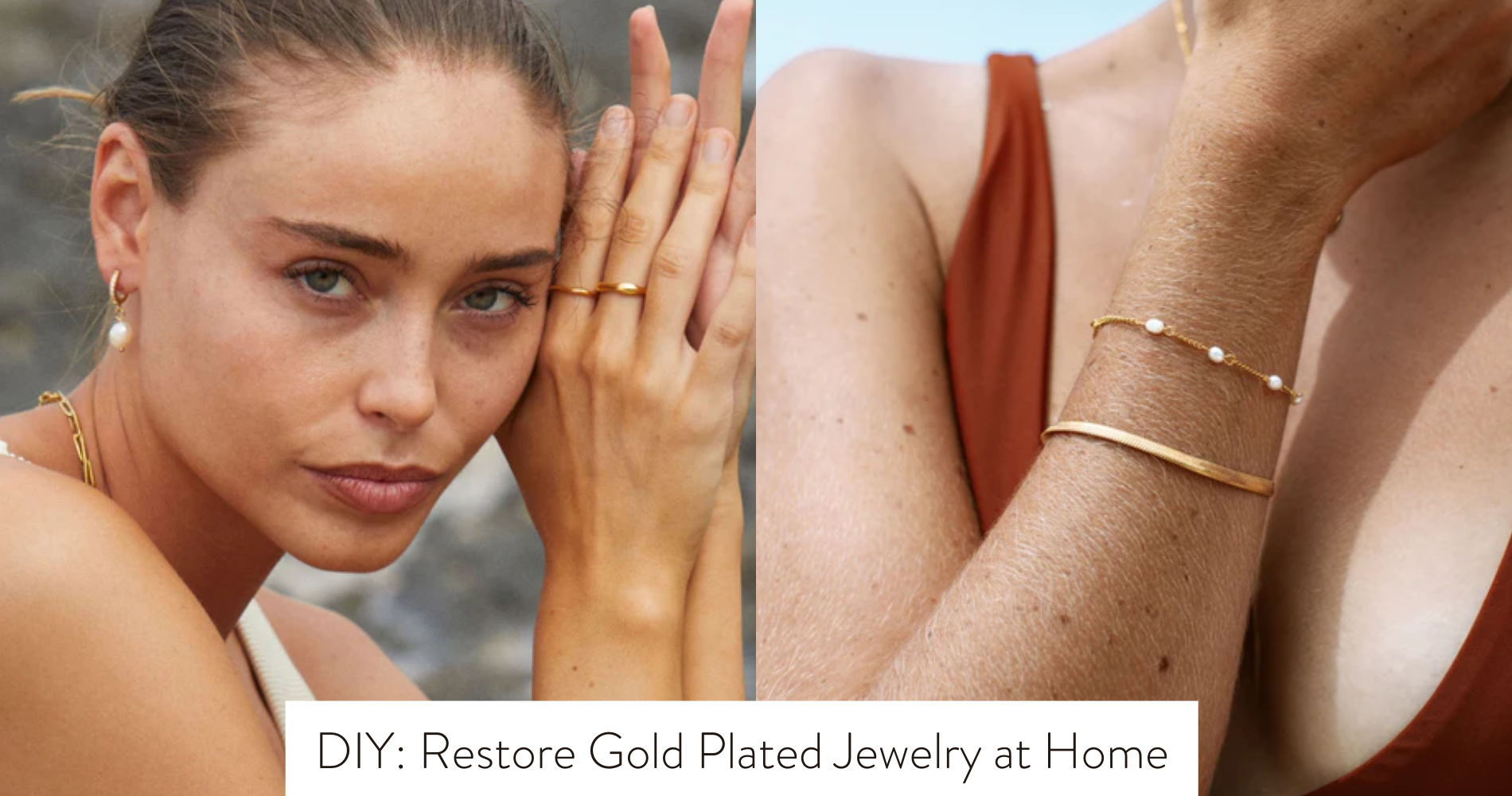
Exploring Varieties: Different Types of Pearls
Discover the world of pearls! From Freshwater to South Sea Pearls, each type offers unique qualities like luster and size. Freshwater Pearls are affordable and come in natural colors. Akoya Pearls are meticulously cultivated for their exquisite luster. Tahitian Pearls shine with a stunning array of colors. South Sea Pearls impress with their opulent beauty. Baroque Pearls embrace irregular shapes and trends. Beyond these are special varieties like Biwa, Edison, and Coin Pearls, each with its own story to tell. Uncover the elegance and diversity of pearls with a touch of uniqueness waiting to be explored further.
Freshwater Pearls
Freshwater pearls are often favored for their unique luster and affordability compared to other types of pearls. When it comes to pearl farming, freshwater pearls are cultivated in mussels, making them more abundant than saltwater pearls. To see an exquisite selection that embodies this sustainable approach, explore Atolea's Freshwater Pearls Jewelry collection. Sustainability practices have been implemented in many freshwater pearl farms to guarantee the long-term health of the environment and the mussels that produce these beautiful gems.
In recent fashion trends, freshwater pearls have made a strong comeback, adorning not only classic pearl necklaces but also modern and trendy designs. From delicate earrings to statement bracelets, freshwater pearl jewelry is versatile and can be styled in various ways to suit different occasions. The natural colors of freshwater pearls, ranging from white and pink to lavender and even black, make them a popular choice for those seeking elegant yet affordable accessories.
Embrace the allure of freshwater pearls in your jewelry collection, knowing that they aren't only stylish but also produced with sustainability in mind.
Akoya Pearls
Let's talk about Akoya Pearls.
These pearls are known for their exquisite luster qualities and are cultivated through a meticulous process.
Understanding the cultivation process and appreciating the unique luster of Akoya Pearls can enhance your appreciation for these beautiful gems.
Cultivation Process
The cultivation process of Akoya pearls involves meticulously implanting a nucleus into the oyster and nurturing its growth for several months. Cultivation techniques play an important role in ensuring the quality of the pearls.
After the nucleus is inserted, the oyster is returned to the water where it's carefully monitored. Pearl harvesting techniques are then employed to retrieve the pearls once they've reached maturity. Farmers delicately extract the pearls from the oysters without causing damage to the valuable gem inside. This process requires skill and precision to maintain the integrity of the pearls.
Through these meticulous cultivation and harvesting methods, Akoya pearls are carefully produced, showcasing their beauty and luster.
Unique Luster Qualities
Boasting a unique luster that enchants admirers, Akoya pearls stand out for their exquisite sheen and radiance. The exceptional shine of Akoya pearls is a result of their high-quality pearl grading, which guarantees each pearl possesses a brilliant surface. Their distinctive glow is unparalleled, making them a sought-after choice for elegant jewelry pieces.
To maintain their luster, proper pearl care is crucial. Gently wipe them with a soft cloth after wearing to remove any oils or residues that may diminish their shine. Avoid exposing Akoya pearls to harsh chemicals or perfumes, as these can harm their surface. With the right care, Akoya pearls will continue to shine brightly, mesmerizing all who behold their beauty.
Tahitian Pearls
Recognized for their stunning array of colors and unique luster, Tahitian pearls are highly sought after in the world of jewelry. These exotic pearls, often referred to as black pearls, are cultivated in the pristine waters of French Polynesia. The allure of Tahitian pearls lies in their enchanting hues, ranging from dark charcoal and peacock green to silver with hints of pink and blue. The black pearl mystique surrounding Tahitian pearls adds to their desirability and elegance.
Crafted by the Pinctada margaritifera, or black-lipped oyster, Tahitian pearls are known for their larger sizes compared to other types of pearls. The process of cultivating Tahitian pearls is meticulous, with pearl farmers paying close attention to the oysters' environment to guarantee the development of high-quality pearls.
When adorned in jewelry, Tahitian pearls exude a sense of sophistication and luxury. Their unique colors and luster make them a versatile choice for both formal occasions and everyday wear. Embrace the exotic allure of Tahitian pearls and add a touch of elegance to your jewelry collection.
South Sea Pearls
Nestled in the warm waters of the South Pacific, South Sea pearls captivate with their sheer size and opulent luster. Cultivated using advanced techniques, these pearls are among the largest in the world, ranging from 9mm to a remarkable 20mm in size. The cultivation process involves grafting a small shell bead into the oyster, allowing the pearl to form over time.
South Sea pearls are renowned for their exquisite colors, including creamy white, silvery white, and golden hues. These colors are a result of the type of oyster and the waters in which they're cultivated. The pearls undergo a strict grading process based on factors like luster, surface quality, shape, and size consistency. Only the finest pearls with the highest quality make it to the top grades, ensuring that each South Sea pearl is a treasure to behold.
Baroque Pearls
Baroque pearls, with their irregular shapes and unique charm, stand out as distinctive treasures in the world of pearl jewelry. These pearls are loved for their organic and asymmetrical forms, making each piece one-of-a-kind. In recent jewelry trends, baroque pearls have gained popularity for their unconventional beauty and artistic appeal. They are often used in contemporary designs to add a touch of individuality and sophistication to accessories. Embracing imperfection, baroque pearls showcase the beauty found in irregularity, setting them apart from traditional round pearls.
| Characteristics | Description |
| Shape | Irregular and asymmetrical shapes |
| Luster | Unique, often with a soft, appealing glow |
| Usage | Trending in modern jewelry designs for a standout look |
Baroque pearls offer a fresh perspective in the world of pearls, appealing to those who appreciate the beauty of natural, imperfect forms. As jewelry trends continue to evolve, these pearls remain a sought-after choice for those looking to make a statement with their accessories.
Mabe Pearls
Embracing a unique semi-spherical shape, Mabe pearls captivate admirers with their distinct allure in the world of pearl jewelry. These pearls are cultivated by attaching a small nucleus to the inner shell of a mollusk, allowing it to grow into a rounded, flat-bottomed shape.
Here are some key points about Mabe pearls:
- Versatile Mabe Pearl Jewelry: Mabe pearls are often used in creating trendy designs like statement rings, earrings, and pendants. Their shape and luster make them a popular choice for modern and elegant jewelry pieces.
- Sustainable Mabe Pearl Farming: The cultivation of Mabe pearls involves sustainable practices that prioritize the well-being of the mollusks and the environment. By focusing on ethical farming methods, these pearls are produced in a way that minimizes harm to marine ecosystems.
- Unique Aesthetic Appeal: Mabe pearls stand out due to their distinctive shape and iridescence. Their smooth, flat backs make them comfortable to wear while their lustrous front surface adds a touch of sophistication to any jewelry piece.
- Increasing Popularity: As consumers seek out alternative pearl varieties, Mabe pearls have been gaining popularity for their modern look and versatility in jewelry design.
Keshi Pearls
With their unique formation process and natural beauty, Keshi pearls are highly sought after in the world of fine jewelry. Keshi pearls are known for their vibrant range of colors, including white, cream, silver, gold, and even rare shades like blue and green. These pearls come in various sizes, ranging from small seed pearls to larger, more statement-making pieces.
Keshi pearls are formed unintentionally as byproducts of the culturing process, where small pieces of shell or tissue become lodged in the oyster, prompting the growth of these lustrous pearls. Due to their irregular shapes and high luster, Keshi pearls are often used in creating unique and artistic jewelry pieces. Their natural appeal makes them popular in both contemporary and traditional designs, adding a touch of sophistication to any jewelry collection.
Whether used as standalone pieces or combined with other gems, Keshi pearls bring a touch of elegance and individuality to any jewelry creation.
Biwa Pearls
Let's talk about Biwa pearls.
These pearls have their origins in Lake Biwa in Japan. Known for their unique characteristics, Biwa pearls are distinct in shape and color.
Biwa Pearl Origins
Biwa Pearls, originating from Lake Biwa in Japan, are known for their unique shapes and lustrous quality. When it comes to Biwa pearl farming, meticulous cultivation techniques are utilized to guarantee the pearls' exceptional beauty.
Here are some key points about Biwa Pearl Origins:
- Historical Significance: Lake Biwa has been a center for pearl cultivation for centuries.
- Cultivation Innovation: Biwa pearl farmers employ innovative techniques to foster the pearls.
- Natural Habitat: The pristine waters of Lake Biwa provide an ideal environment for pearl cultivation.
- Harvesting Process: Skilled artisans carefully harvest and process these pearls to bring out their natural beauty.
Biwa Pearl Characteristics
Known for their unique shapes and lustrous quality, Biwa Pearls exhibit distinct characteristics that set them apart in the world of pearl jewelry. These pearls are cultivated in freshwater pearl farms, primarily in Lake Biwa, Japan.
Biwa pearl jewelry often showcases irregular shapes, ranging from asymmetrical to baroque, making each piece one-of-a-kind. The pearls' colors vary from white and cream to delicate pastel hues, offering a wide range of options for jewelry designers and enthusiasts.
Due to their freshwater origins, Biwa Pearls typically possess a high luster and a smooth surface. When shopping for Biwa pearl jewelry, look for pieces that highlight the natural beauty and uniqueness of these exquisite pearls.
Edison Pearls
Edison Pearls, highly regarded for their lustrous sheen and unique colors, are cultivated through a specialized process developed by Zhan Weijian. These pearls have gained popularity for their exceptional quality and beauty, making them a sought-after choice for those looking to add a touch of elegance to their jewelry collection.
Here are some key points about Edison Pearls:
- Unique Cultivation: Edison pearls are cultivated using a technique that involves inserting a small bead into the mollusk, resulting in larger pearl sizes and stunning colors.
- Rich Luster: These pearls are known for their intense luster, which gives them a radiant and enchanting appearance.
- Vibrant Colors: One of the distinguishing features of Edison pearls is the wide range of colors they exhibit, from classic white and pink to more exotic shades like lavender and peacock green.
- Versatile Designs: Due to their modern appeal and affordability, Edison pearls are often incorporated into contemporary jewelry designs, offering a luxurious yet accessible option for pearl enthusiasts.
Coin Pearls
Coin pearls are known for their unique coin shape, making them a versatile option for jewelry.
These pearls offer a modern twist on classic pearl accessories, adding a touch of sophistication to any outfit.
Embrace the distinct beauty of coin pearls for a contemporary and elegant look.
Unique Coin Shape
Have you ever encountered pearls that resemble flat, circular discs instead of the traditional round shape? Coin pearls, with their distinctive coin-like shape, are gaining popularity in the world of jewelry.
Here are a few points to ponder about these unique pearls:
- Coin Pearl Characteristics:
- Coin pearls are flat and have a disc-like form.
- They come in various sizes, from small to large.
- These pearls often have a sleek, shiny surface.
- Coin pearls can be found in different colors, adding versatility to jewelry designs.
Coin pearl jewelry trends are on the rise as they offer a contemporary twist to classic pearl jewelry, making them a stylish choice for those seeking something special.
Versatile Jewelry Option
With their unique flat and disc-like shape, coin pearls offer a versatile option for creating contemporary and stylish jewelry pieces. These pearls can be incorporated into custom designs that showcase artisan craftsmanship, elevating your accessories to a whole new level.
Coin pearls are currently part of trending styles, making them a must-have for anyone looking to make a fashion statement. Whether you prefer a minimalist look or a more elaborate style, coin pearls can adapt to your preferences with ease.
Their modern aesthetic and eye-catching appearance make them a popular choice for those seeking to add a touch of sophistication to their jewelry collection. Embrace the versatility of coin pearls and let your personal style shine through.
Frequently Asked Questions
How Can I Tell if a Pearl Is Real or Fake?
To tell if a pearl is real or fake, look for identifying characteristics like luster, shape, and surface flaws. Test it by rubbing it against your teeth - a real pearl feels gritty. Common imitations include glass beads. Authenticity indicators are certification and reputable sellers.
Are There Any Specific Care Instructions for Maintaining the Luster of Different Types of Pearls?
To maintain the luster of different types of pearls, follow specific care instructions. Use gentle cleaning techniques and store them properly. Avoid exposing pearls to harsh chemicals or direct sunlight. By caring for them diligently, you can preserve their beauty for years.
Can Pearls Be Dyed to Achieve Different Colors?
Yes, pearls can be dyed using various techniques to achieve different colors. The process of pearl dyeing involves enhancing the natural hues or completely changing them. Color psychology is often considered to evoke specific emotions and meanings.
What Is the Significance of the Size and Shape of Pearls in Terms of Quality and Value?
When considering pearls, remember that size and shape play an essential role in determining their quality and value. The significance lies in how these characteristics reflect the overall beauty and desirability of pearls.
Are There Any Sustainable Practices in Pearl Farming to Consider When Purchasing Pearls?
When buying pearls, consider sustainable practices like ethical sourcing. Look for certifications or information on how pearls are farmed. By choosing responsibly, you support the environment and guarantee ethical treatment of workers in the industry.
Conclusion
To sum up, delving into the different types of pearls can unveil a whole new world of beauty and variety in jewelry.
From the timeless Akoya pearls to the exotic Tahitian pearls, each type offers its own unique charm and allure.
Whether you prefer the luster of South Sea pearls or the irregular shapes of Baroque pearls, there's a pearl out there for everyone's taste and style.
So go ahead, immerse yourself in the world of pearls and discover your favorite variety!






















Leave a comment
This site is protected by hCaptcha and the hCaptcha Privacy Policy and Terms of Service apply.